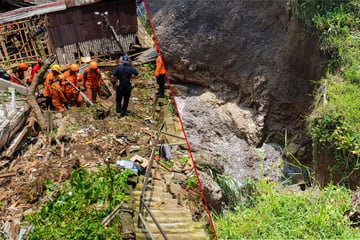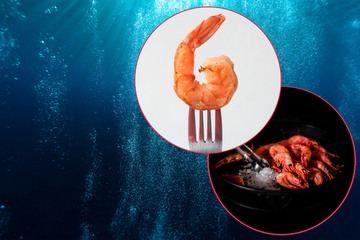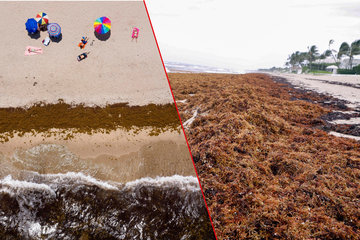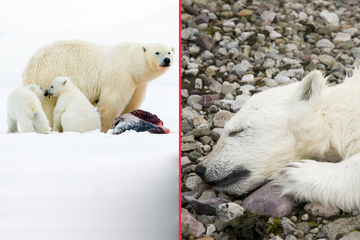Do dingoes eat babies? The story behind "A dingo ate my baby"
The famous quote "a dingo ate my baby" has historically been a rather morbid cultural reference, but what's the real story behind it? Did a dingo actually eat a baby? Are they as dangerous as they seem?

It won't come as a surprise that leaving a dingo alone with a baby is probably not the best idea to ever cross a person's mind. Is their viciousness a little overblown, though? Are dingoes really so dangerous, will they actually eat the baby? Hang on, wasn't there are a story about this a few years back?
So what are the natural facts that we should all know about dingoes? What's the story behind "a dingo ate my baby," what should we be concerned about in outback Australia? Oh, and do dingoes eat babies?
What is a dingo?
Dingoes are sandy-orange wild dogs found predominantly in central and northern Australia. These medium-sized canines are not usually domesticated, but are often comfortable around humans due to their historic association with indigenous peoples and societies across the continent.
They are fascinating animals, having formed a relationship with Indigenous Australian's in pre-colonial times, often hunting and sleeping together for mutual benefit. This puts them in a strange place where they can't be considered a totally wild animal, nor a domestic one, therefore giving them the classification of being "feral."
Descended from an ancestor that they share with the New Guinea singing dogs of Australia's northern neighbor, the dingo has been around for at least four thousand years, likely longer. They have distinctive coats, are incredibly intelligent and strong, and hunt for their food.
Interestingly, dingoes commonly eat kangaroos, wallabies, domesticated cattle, other farm animals, rats, and other small mammals such as rabbits and wombats. They've also been known to eat fish, though they are less effective hunters when in water.
There are millions of interesting things that we could share with you about dingoes. They are fair dinkum true-blue Aussies, loved by many and feared by few. Dingoes are classified as vulnerable, though, and have seen decreasing populations over the last few decades.
"A dingo ate my baby!": Lindy Chamberlain-Creighton's story
Now it's time for the meat of this-here article, in other words: What the heck is behind the whole "A dingo ate my baby" thing? To begin, I'm going to take you back to 1980, a year like no other - Moscow hosted the summer olympics, Mount St. Helens erupted, John Lennon was shot, and a dingo ate a baby.
While camping in the Australian outback, near Uluru in the Northern Territory, Lindy Chamberlain-Creighton and Michael Chamberlain made a fatal mistake. Having given birth to their baby, Azaria Chamberlain, only nine weeks prior, the couple let their eyes wander from the bub, which was chilling in their tent.
According to the Chamberlains, Lindy was the first to notice a sand-colored dog who had grabbed Azaria from the tent. In a mad scramble, she called out to her then-husband, reportedly screaming "The dingo's got my baby" or "a dingo took my baby". Sadly, it was too late.
The ensuing media scramble saw a major court case unfold, with authorities believing that their dingo story was too far-fetched (we'll explain why in a moment). Lindy was charged and convicted of murder, and Michael was convicted as an accessory after the fact. Years later, the courts were overruled, and the couple absolved of the crime, but that is not the end of this story.
In 1988, the feature film Evil Angels (or A Cry in the Dark if you're an Aussie or a Kiwi) came out, featuring Meryl Streep. The movie detailed not only Azaria Chamberlain's death, but the subsequent court cases - this is where the phrase "A dingo ate my baby" came from, and where it entered the public lexicon.
Since then, the term "A dingo ate my baby" has been referenced in a variety of media. A 1991 Seinfeld episode saw Elaine use the phrase at a party, Family Guy took a swing at it, and so did Buffy the Vampire Slayer. This devastating story has, sadly, become more the butt of a joke than the actual tragedy that it is.
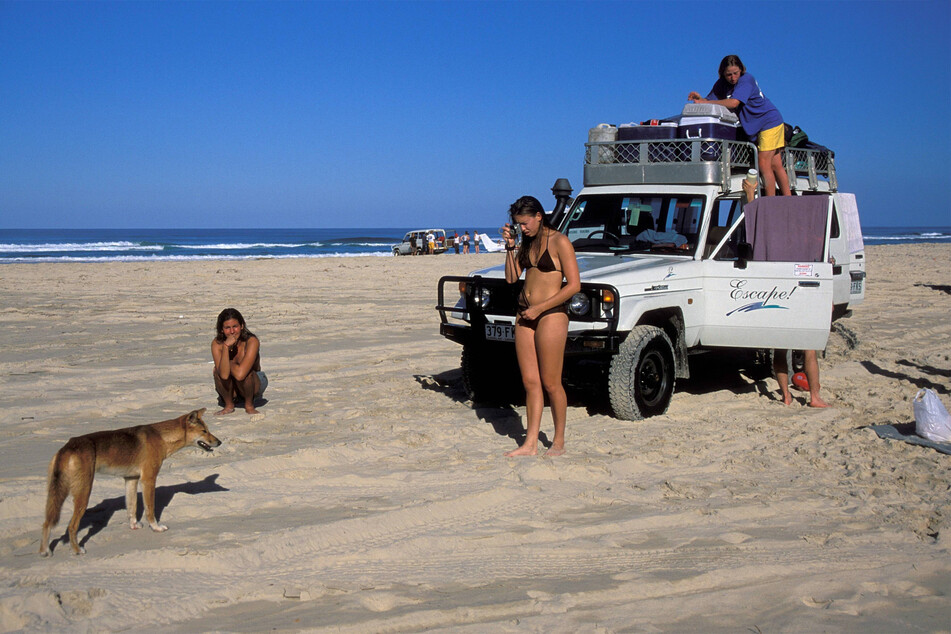
Are dingoes dangerous?
So, why did the courts originally find the Chamberlain's story unbelievable? Well, because dingoes have not been known to attack and prey on humans. They are hunters that have a history of coexisting with humans, and don't usually consider us to be food. What we need to remember, though, is that they're still wild dogs.
According to advice given by the Queensland Government, the only real danger that dingoes can pose is if they become "familiar and habituated to humans". This will happen if you feed them, keep food out in the open when camping, or make them feel like they can come up to you.
If you see a dingo in the wild, leave it be. Do not feed it, do not try to pat it, try to walk with a stick, and make sure that you are in a group. They will usually ignore you, but keep an eye out and make sure that you are "Dingo-safe"!
Do dingoes eat babies?
Part of that dingo safety is keeping your young children supervised and within arms reach when in dingo territory. It's extremely rare that they will attack or hurt anybody, they'll likely just give you a sniff out of curiosity, but if they do then they will attack the smallest in your group.
You have to remember that these are not wolves – these are relatively small-to-medium sized canines. They are strong, fast, and incredibly intelligent, but they don't have the size or strength of an apex predator like a wolf or a bear. On top of that, they are not aggressive animals and will only attack out of perceived opportunity and to feed, not out of anger or malice.
Dingoes have rarely attacked people but, if they were going to attack, then babies would likely be the easiest target. That's why it's so important to keep them within arm's reach, or hold your baby, at all times.
What do dingoes eat?

Dingoes are typically carnivorous animals, predominantly consuming small-medium sized mammals as well as fish. On occasion, though, these dogs will team-up to take down larger animals - such as kangaroos, or even domesticated cows - to feed on. To be completely honest, their diet sounds kind-of delicious!
Here's a brief list of typical dingo food sources:
- Kangaroos
- Wallabies
- Wombats
- Rodents (mice, rats, etc.)
- Rabbits
- Bird
- Lizards
- Wild boar
- Fish
While dingoes are hunters, they will also scavenge on the corpses of dead animals if need-be. It's important to note that while they won't typically attack humans, they are still wild dogs and care should always be taken around all wild dogs.
The crazy dingo is an Australian icon, but not usually all-that dangerous
Australia is famous for its many dangerous animals. Indeed, it's one of the few things that people say to expat Aussies like myself. "Oh, there are so many dangerous animals in Australia, am I right?" is almost as synonymous as "Oh wow, so far!" when you meet a stranger at a bar and, while it can be annoying, it's not that untrue a stereotype.
The cavalier attitude we Aussies stereotypically have towards dangerous animals is probably a little overplayed, if I'm honest (spiders scare the living daylights out of me!), but when it comes to dingoes we couldn't give less of a toss. For starters, dingoes are only found out in the middle of nowhere and, even there, they are incredibly rare.
Dingoes hunt and will of course prey on small defenseless animals (like unattended babies, for example), but to be honest none of us should be leaving a baby unattended to in the middle of the desert. Right?
Cover photo: Collage: IMAGO/Agefotostock/Pond5
